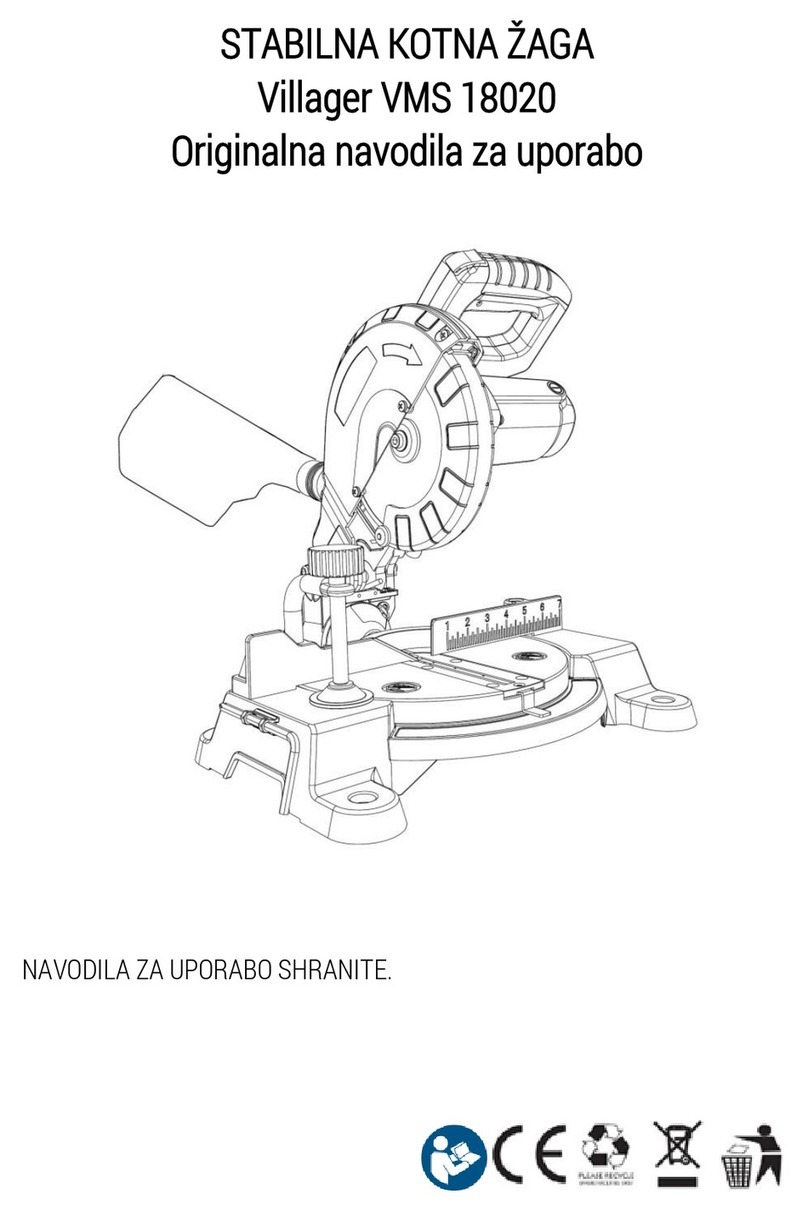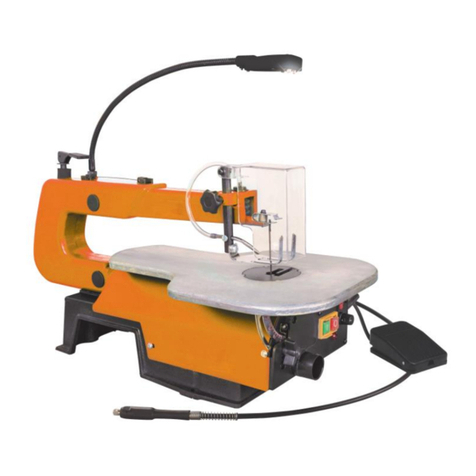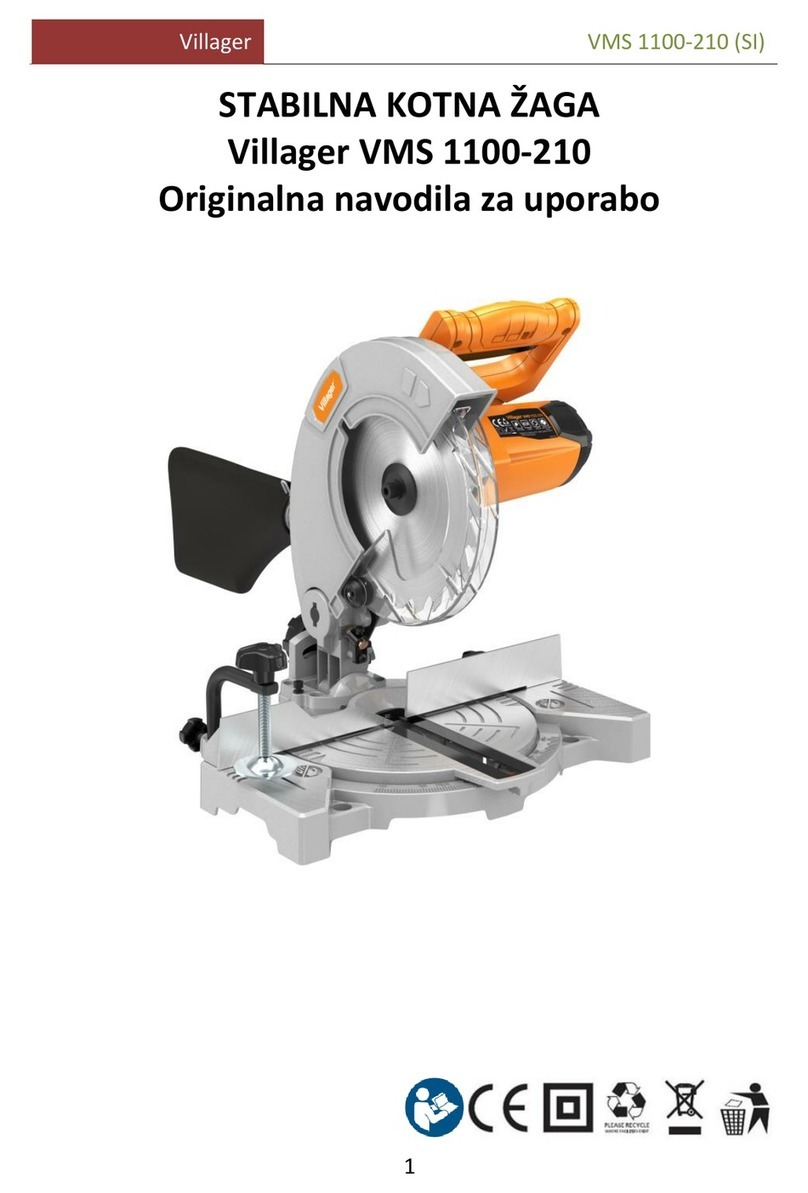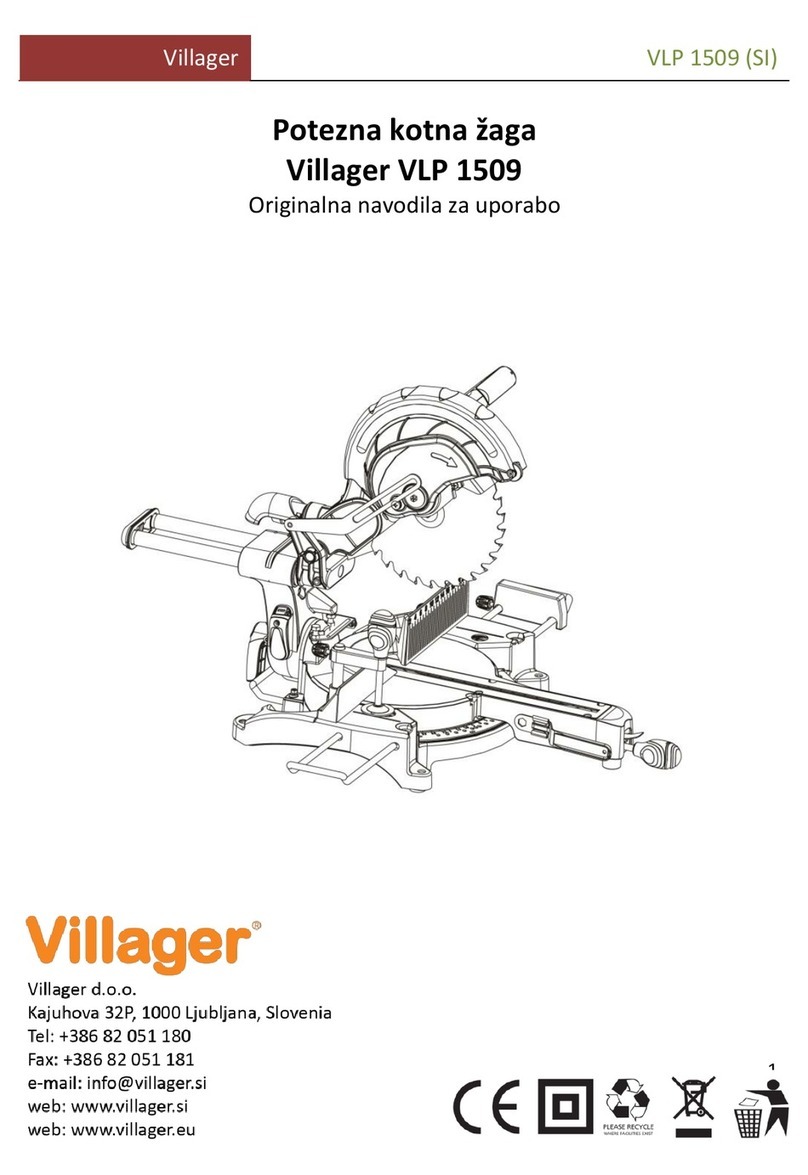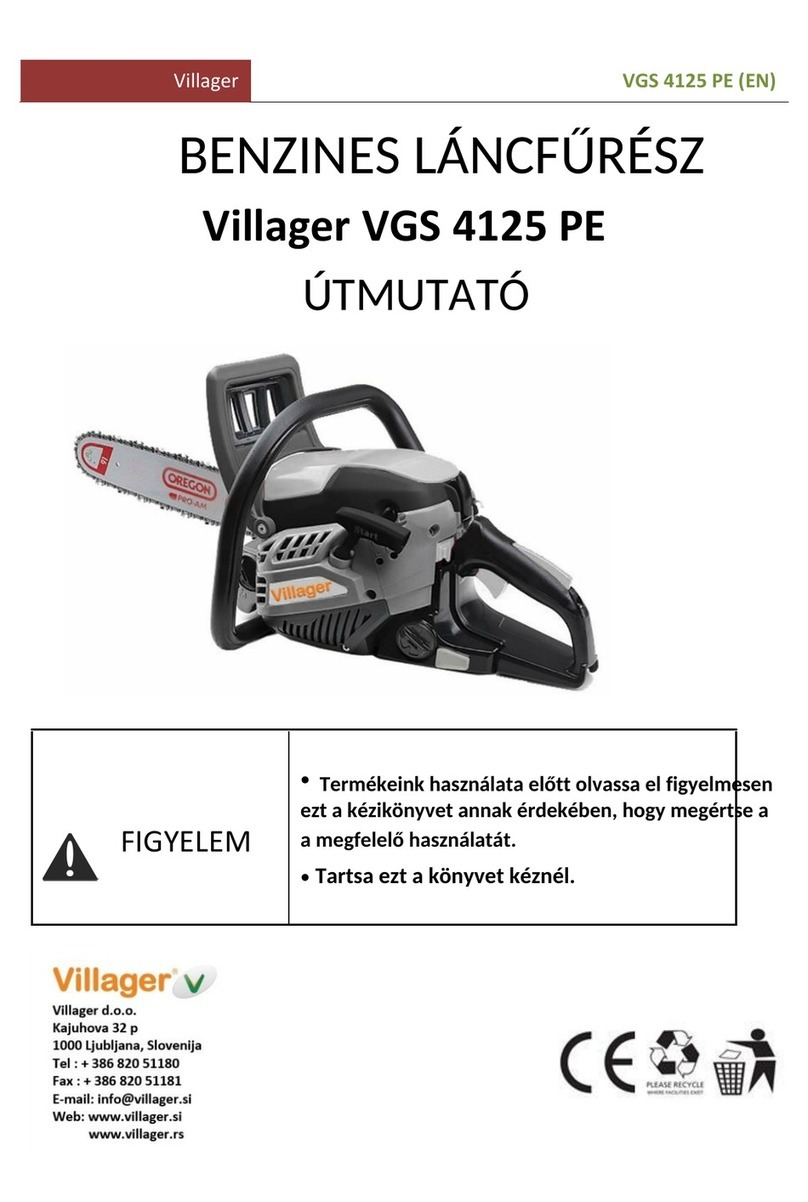2
3) Osebna varnost
a) Bodite pozorni, pazite kaj delate ter se dela z električnim orodjem lotite z razumom.
Ne uporabljajte električnega orodja, če ste utrujeni oziroma če ste pod vplivom mamil,
alkohola ali zdravil. Trenutek nepazljivosti pri uporabi električnega orodja je lahko vzrok
za resne telesne poškodbe.
b) Uporabljajte osebno zaščitno opremo. Vedno uporabljajte zaščito za oči. Z uporabo
zaščitne opreme, kot so protiprašna maska, varnostni čevlji, ki ne drsijo, čelada ali
zaščita za sluh, v ustreznih okoliščinah zmanjšate nevarnost poškodb.
c) Preprečite nenameren vklop orodja. Pred priključitvijo električnega orodja na
električno omrežje in/ali na akumulatorsko baterijo in pred dviganjem ali nošenjem se
prepričajte, da je električno orodje izklopljeno. Če električno orodje nosite in imate pri
tem prst na stikalu ali pa orodje napajate, ko je stikalo v položaju za vklop, lahko pride do
nesreče.
d) Odstranite vse ključe in izvijače za prilagajanje orodja, preden orodje vključite. Ključ ali
izvijač, ki ga ne odstranite z vrtečega se dela električnega orodja, lahko povzroči telesne
poškodbe.
e) Ne precenjujte svojih sposobnosti. Ves čas trdno stojite in vzdržujte ravnovesje. To
omogoča boljši nadzor nad električnim orodjem v nepričakovanih situacijah.
f) Bodite primerno oblečeni. Ne nosite ohlapnih oblačil ali nakita. Las in oblačil ne
približujte premikajočim se delom. Ohlapna oblačila, nakit ali dolgi lasje se lahko
ujamejo v premikajoče se dele.
g) Če imate na voljo naprave za priklop sesalnika za prah ali zbiralnih posod, se
prepričajte, da so te ustrezno priključene.Uporaba sistema za zbiranje prahu lahko
zmanjša nevarnosti, povezane s prahom.
h) Naj seznanjenost z orodjem, ki jo pridobite s pogosto uporabo, ne bo razlog za to, da
postanete lahkomiselni in ignorirate varnostna načela. V delčku sekunde lahko
nepozorno dejanje pripelje do hude poškodbe.
4) Uporaba in vzdrževanje električnega orodja
a) Električnega orodja ne preobremenjujte. Za delo uporabite ustrezno električno orodje.
Pravo električno orodje bo delo opravilo bolje in varneje, in sicer s hitrostjo, za katero je
bilo oblikovano.
b) Električnega orodja ne uporabljajte, če ga s stikalom ne morete vklopiti in izklopiti.
Vsako električno orodje, ki ga ni mogoče nadzirati s stikalom, je nevarno in ga je treba
popraviti.
c) Izvlecite vtič iz vtičnice in/ali odstranite akumulatorsko baterijo, če je le mogoče, in
odstranite ter shranite pribor, še preden se lotite popravila orodja. Ti preventivni
varnostni ukrepi zmanjšajo tveganje za nenamerni zagon aparata.

